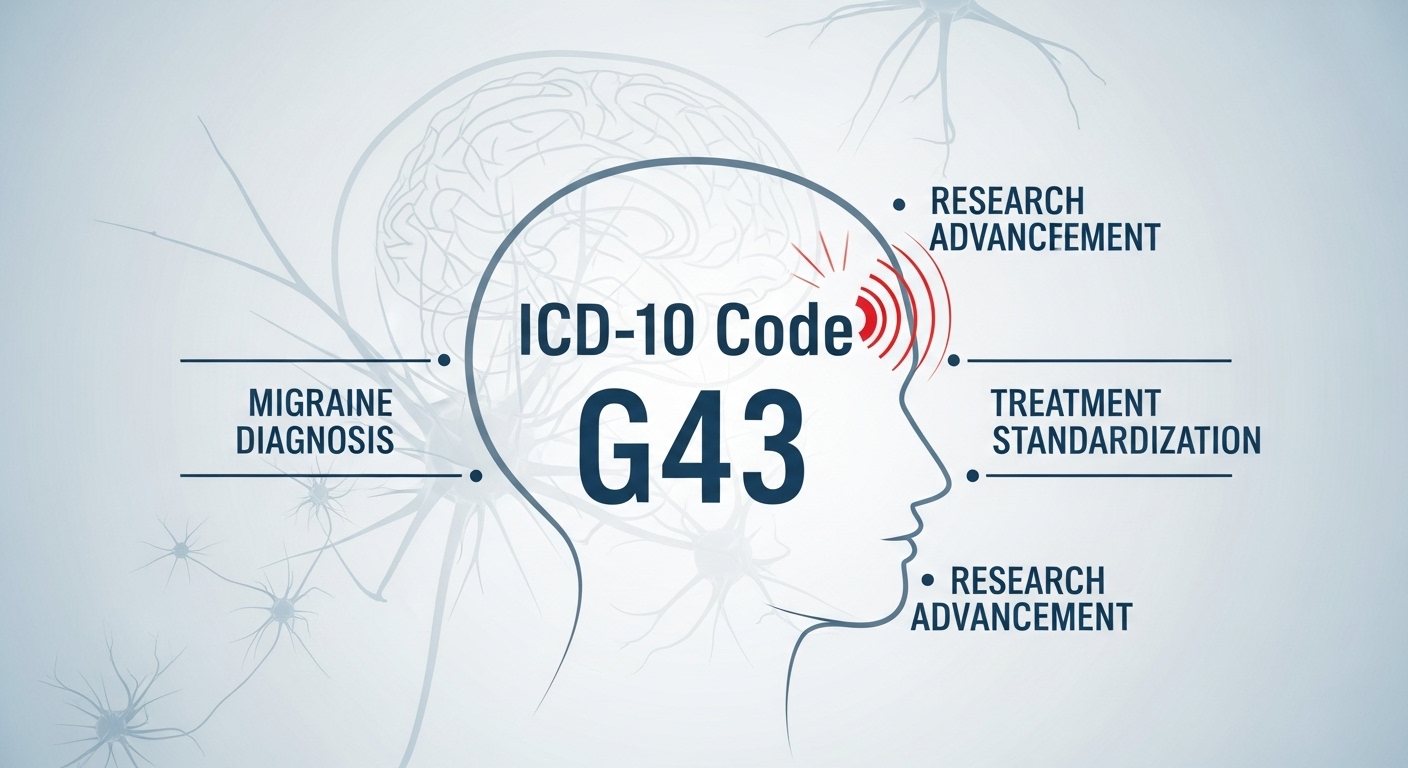The medical code Cid10g43 is widely recognized in the healthcare world for its connection to migraine disorders. This code, part of the International Classification of Diseases (ICD-10), allows medical professionals to record and analyze cases of migraines with accuracy. Understanding Cid10g43 not only helps doctors diagnose patients correctly but also assists in research, insurance claims, and global health monitoring.
What Is Cid10g43?
The term Cid10g43 identifies different forms of migraine — a neurological condition that causes intense, recurring headaches often accompanied by other symptoms like nausea and visual disturbances. The ICD-10 system uses Cid10g43 to categorize these migraine types systematically. This helps hospitals, clinics, and insurance providers maintain clear records, improving the consistency and quality of healthcare services across countries.
Understanding Migraine Through Cid10g43
Migraines under the Cid10g43 category are not simple headaches. They are episodes of severe pain that can last for hours or even days. The pain usually affects one side of the head and can be triggered by various factors, including stress, hormonal changes, or certain foods. By coding these conditions as Cid10g43, healthcare professionals can track symptoms more efficiently and identify patterns that help tailor individual treatments.
Medical and Administrative Uses of Cid10g43
The Cid10g43 classification serves multiple purposes beyond diagnosis. It ensures accurate communication between medical staff, supports insurance claims, and allows health authorities to monitor disease trends. Hospitals use Cid10g43 to analyze how often migraines occur in specific populations, leading to improved healthcare planning. For doctors, it provides a quick reference that simplifies reporting and patient management.
Types of Migraines Under Cid10g43
There are several subcategories within Cid10g43, each describing a different migraine type. These include migraine with aura, migraine without aura, and chronic migraine. Each subtype presents unique symptoms, and recognizing them through Cid10g43 allows doctors to choose the most effective treatment plan. For instance, some patients experience warning signs like flashing lights or blind spots, while others may have headaches without any visual symptoms.
Treatment Options for Cid10g43-Related Conditions
Treating a condition under Cid10g43 depends on its severity and triggers. Doctors may recommend over-the-counter pain relievers for mild cases, while severe migraines may require prescription medicines such as triptans or preventive drugs like beta-blockers. Lifestyle adjustments also play a crucial role. Patients diagnosed with Cid10g43 are often advised to avoid known triggers, stay hydrated, and maintain regular sleep patterns to reduce migraine frequency.
Common Triggers Associated with Cid10g43
People dealing with Cid10g43 migraines often have certain triggers that lead to an attack. These can include bright lights, strong odors, dehydration, skipping meals, or even weather changes. Keeping a migraine diary helps patients record symptoms and recognize these triggers. Doctors then use this information to develop better prevention strategies, making Cid10g43 an important part of long-term migraine management.
Research and Global Impact of Cid10g43
Researchers rely on Cid10g43 to collect consistent global data about migraine frequency, causes, and treatment effectiveness. This code standardizes the way data is recorded, which allows scientists to compare results from different regions. Through this, Cid10g43 has become an essential component of neurological research, helping to uncover new insights into migraine causes and potential cures.
Living with a Cid10g43 Diagnosis
Being diagnosed under Cid10g43 can initially seem overwhelming, but it provides a pathway to better treatment. Understanding the code helps patients learn about their condition and take active steps toward managing it. From adjusting diet to practicing stress reduction techniques, small lifestyle changes can make a big difference. Healthcare professionals encourage patients with Cid10g43 to maintain a supportive relationship with their doctors and follow personalized treatment plans.
The Future Role of Cid10g43 in Digital Healthcare
With the growth of digital health systems, Cid10g43 is becoming even more important. Electronic health records (EHRs) use this code to store and share patient data efficiently. This ensures that no matter where a patient goes, their migraine history under Cid10g43 remains accessible to doctors. Such advancements will continue to improve treatment accuracy and healthcare coordination worldwide.
Conclusion
In conclusion, Cid10g43 plays a critical role in the modern medical system. It represents not just a code, but a bridge between patients, doctors, and researchers. Through this classification, migraine diagnosis, management, and prevention have become more structured and effective. Understanding Cid10g43 allows for clearer communication, better data, and ultimately, healthier lives for millions of people suffering from migraines.
